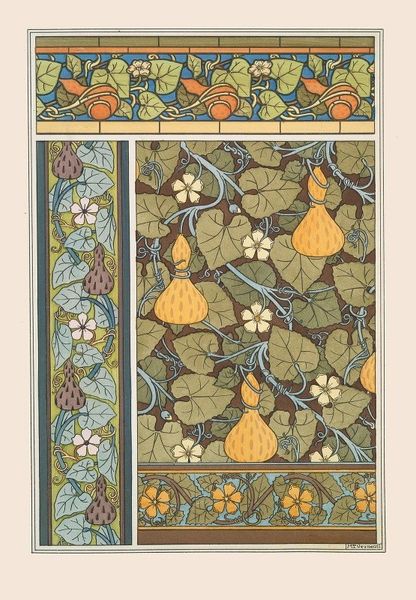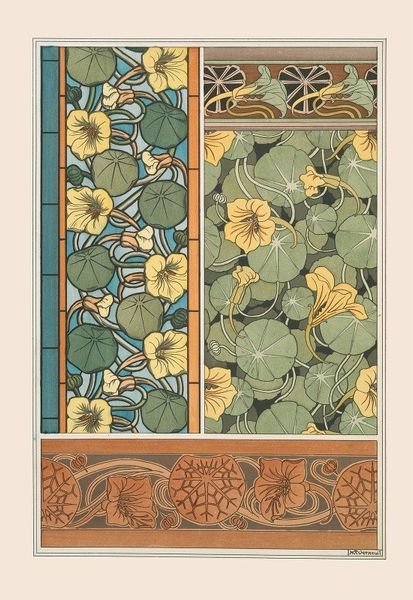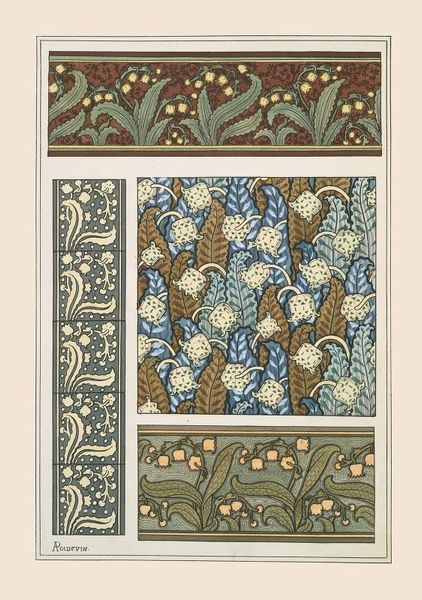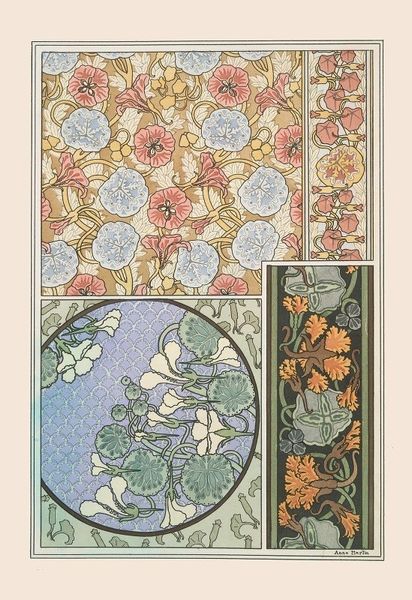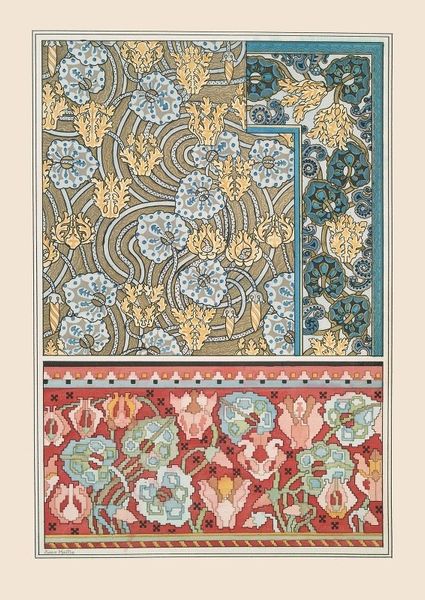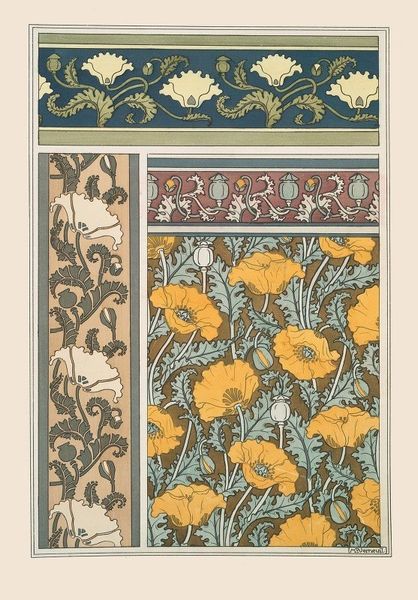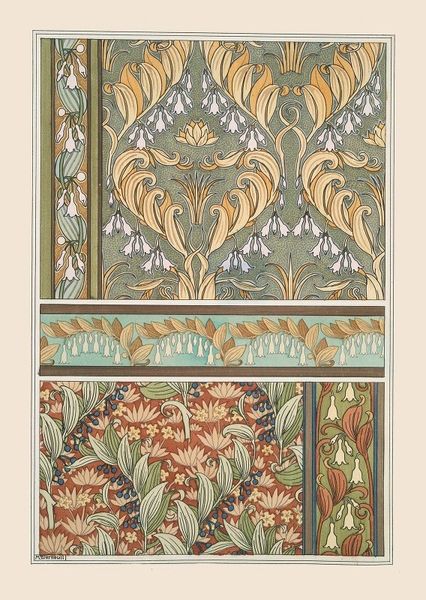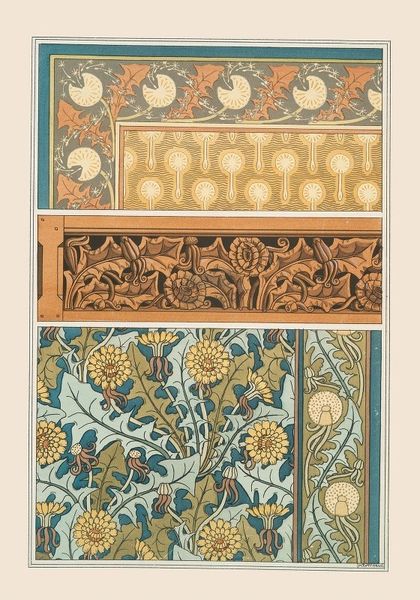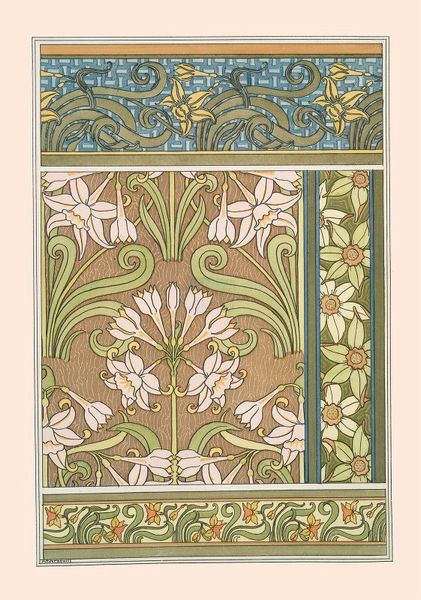
drawing, graphic-art, paper
#
drawing
#
graphic-art
#
art-nouveau
#
paper
#
decorative-art
Copyright: Public Domain: Artvee
Editor: So, this is Maurice Pillard Verneuil's "Chrysanthème 2," made in 1896. It's a graphic drawing, very much in the Art Nouveau style. What strikes me is the emphasis on patterns... how do you interpret this work? Curator: Well, seeing these meticulously crafted floral patterns immediately prompts me to think about the social and political undercurrents of the Art Nouveau movement. Think about it: in late 19th-century Europe, the rise of industrial production threatened traditional crafts and design. Verneuil and other Art Nouveau artists consciously rejected that cold, impersonal aesthetic. How do you think his focus on nature and handmade designs relates to ideas around labor, class, and identity at the time? Editor: It's like a celebration of the individual artist versus mass production? Curator: Exactly! But also, look at his choice of the chrysanthemum. In Japanese art, the chrysanthemum held symbolic meaning tied to the imperial family. Consider the power dynamics at play here: European artists appropriating non-Western motifs. How do you think this cultural borrowing reflects the colonial mindset of the era? Editor: I never considered that. It seems innocent enough but placing it in that context does bring out these considerations of ownership and appropriation... Curator: These decorative works were meant for bourgeois homes; however, by analyzing how "Chrysanthème 2" borrows and adapts artistic symbols from Japan, and is circulated in France, we can also explore questions about global exchange. We should consider issues related to cross-cultural dialogues, but equally also colonial dominance. What do you think about these works today, knowing what we now know? Editor: It gives me a lot to think about – the intent, the meaning, and even its place in modern society. Thanks. Curator: It shows us that even seemingly "decorative" works can invite important social and political inquiry!
Comments
No comments
Be the first to comment and join the conversation on the ultimate creative platform.
